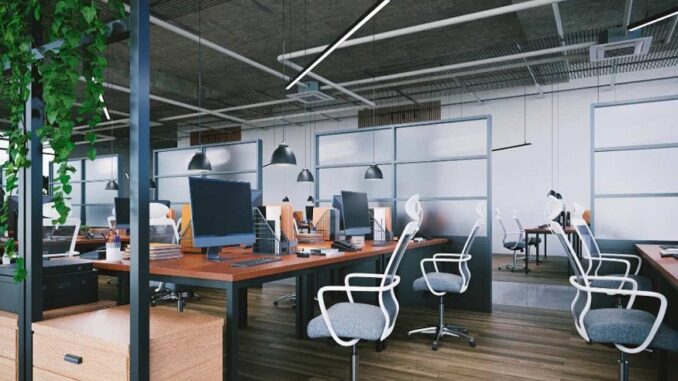
A well-planned office renovation can completely revitalise a workspace, making it more functional, aesthetically pleasing, and conducive to productivity. Whether the goal is to modernise the layout, improve workflow, or create a more inspiring environment, strategic design choices play a crucial role. A successful office renovation considers factors such as space utilisation, lighting, comfort, and technology to create a workplace that enhances efficiency and employee satisfaction.
Optimising the Layout for Better Flow
An effective office layout should encourage collaboration while allowing for privacy when needed. Open spaces promote teamwork, while designated quiet zones provide employees with areas for focused work. The arrangement of desks, meeting rooms, and common areas should align with daily operational needs, ensuring smooth movement throughout the space. A well-thought-out office renovation maximises the available square footage while maintaining a balanced and comfortable environment.
Enhancing the Lighting for Productivity
Lighting has a significant impact on workplace energy levels and focus. Natural light should be prioritised wherever possible, as it helps reduce eye strain and enhances overall well-being. Complementing natural light with strategically placed artificial lighting ensures that all areas remain bright and welcoming. Adjustable lighting options allow employees to customise brightness based on their tasks, making the workspace more adaptable and comfortable.
Incorporating Ergonomic Furniture
Employee comfort is essential in maintaining productivity and reducing workplace fatigue. Ergonomic furniture, such as height-adjustable desks and supportive chairs, helps create a healthier and more efficient work environment. Breakout areas with comfortable seating provide spaces for informal discussions or relaxation. Investing in ergonomic design elements during an office renovation leads to a workspace that prioritises well-being and encourages better posture and movement.
Choosing Durable and Stylish Materials
The choice of materials contributes to both the functionality and aesthetic appeal of an office. High-quality flooring, wall finishes, and furniture should withstand daily wear and tear while complementing the overall design. A neutral colour palette with subtle accent tones creates a professional yet inviting atmosphere. Durable and low-maintenance materials help keep the office looking polished while reducing the need for frequent repairs or updates.
Improving Acoustic Control for Focus
Noise management is crucial in creating a productive office environment. Soundproofing solutions such as acoustic panels, carpets, and partition walls help minimise disruptions in open-plan layouts. Meeting rooms and private offices should be designed with acoustic considerations in mind to ensure clear communication and confidentiality. A well-executed office renovation includes elements that balance collaboration with the need for a quiet and focused workspace.
Integrating Smart Technology for Efficiency
Modern workplaces benefit from the seamless integration of smart technology. Automated lighting and climate control systems help optimise energy usage, while wireless connectivity ensures smooth communication. Meeting rooms equipped with video conferencing tools and collaborative software enhance teamwork and efficiency. Incorporating advanced technology during an office renovation future-proofs the workspace, making it more adaptable to evolving business needs.
Creating a Welcoming Reception Area
The reception area serves as the first impression of an office, setting the tone for both employees and visitors. A well-designed entryway should reflect the company’s identity while providing a comfortable and professional waiting area. Thoughtful use of furniture, lighting, and decor creates an inviting atmosphere that enhances the overall experience. A well-planned office renovation ensures that the reception area aligns with the company’s image while maintaining functionality.
Conclusion
A successful office renovation combines smart planning with practical design choices to create a workspace that is both efficient and inspiring. Optimising the layout, enhancing lighting, incorporating ergonomic elements, and integrating technology contribute to a more productive and comfortable environment. Investing in thoughtful design ensures that the office not only meets operational needs but also supports long-term growth and employee well-being.

Leave a Reply
You must be logged in to post a comment.